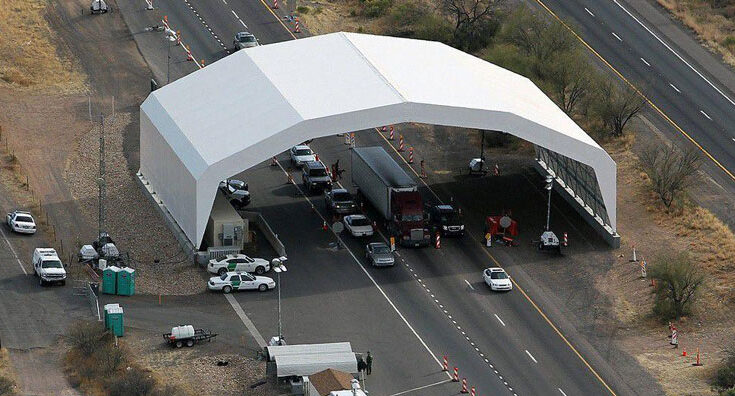Although love knows no borders, U.S. immigration laws have clear-cut policies.
It’s not uncommon for couples to be separated across international borders and be left wondering whether or not they’ll see their loved one again.
We’ll cover the details of the I-129F form and how it can help you reunite with your partner on American soil, according to U.S. Citizenship and Immigration Services (USCIS).
What Is Form I-129F?
U.S. citizens who want to sponsor their partner for a K-1 visa can fill out Form I-129F, also known as the Petition for Alien Fiancé(e).
This document allows foreign partners to enter the country to get married within 90 days of their arrival date.
It supports couples’ journey to permanent residency in the country and helps U.S. citizens bring their loved ones across the border through a K-1 visa.
Moreover, U.S. citizens can petition for their foreign spouses under a K-3 visa while awaiting approval for Form I-130 filed on behalf of the spouse.
It’s essentially a marriage-based visa that also includes the couple’s children under K-2 and K-4 visas.
Who Is Eligible to File Form I-129F?
Our Form I-129F: Fiancé(e) Visa Petition guide outlines the eligibility requirements for both the petitioner and their foreign partner below:
Eligibility Requirements for Petitioners
- Must be U.S. citizens
- Have an intention to marry within 90 days of arrival
- Couple must have met in the previous one or two years (with certain societal and cultural exceptions)
- Must be legally free to marry (with no unresolved prior marriages)
Eligibility Requirements for Foreign Partners
- Must be legally eligible for marriage
- Must not have prior immigration violations or inadmissibility issues
If both parties meet these conditions, U.S. citizens can apply for Form I129F.
Form I-129F: Fiancé(e) Visa Petition Guide to Petition Submission
Filing Form I-129F has several predefined steps, including:
1. Gather Required Documents
Before filling out the petition, you’d need appropriate documentation to support your application.
- Proof of U.S. citizenship — including birth certificates or passports
- Evidence of meeting your partner in the previous one or two years — including photos, travel itineraries, tickets, or written correspondence
- If applicable, a waiver request if you can’t meet in person due to hardship
2. Complete and File Form I-129
Once you have all the required documents at your disposal, you can start filling out the petition by:
- Finding I-129F under the All Forms section on the USCIS page
- Carefully read the instructions provided and open the latest version of the petition
- Add personal details for both you and your partner
- Pay the USCIS filing fee of $675 via a credit or debit card, check or money order
- Submit the completed form to the designated USCIS address
3. Track and Await Approval
When you’ve successfully submitted your documentation, your application goes through the following steps:
- Receiving a receipt notice — or Form I-797C — confirming your submission
- Tracking your petition status using the provided number
- Processing times may vary between 9 and 26 months
- If USCIS requires more information, they may submit a Request for Evidence (RFE)
If your form is approved, your application will be forwarded to the National Visa Center (NVC) for processing and you’ll receive additional instructions on the required steps to complete your submission.
If your petition is denied, you’ll receive a detailed explanation from USCIS on their reasoning behind this decision.
You can contact experienced law firms to offer guidance and help you reapply or file an appeal, if applicable.
4. U.S. Embassy Processing
When the National Visa Center (NVC) has received your submission for pre-processing, your partner will need to complete several steps in the U.S. Embassy of their home country, including:
- Submit Form DS–160 and pay associated K-1 Visa fees
- Undergo medical examination by an approved physician from the U.S. Embassy
- Prepare the necessary documents — including passports and police clearances
- Attend a visa interview in the U.S. Embassy or Consulate
5. Visa Approval and Crossing U.S. Borders
If your partner’s visa has been approved, they’ll receive a stamp in their passport so they can cross the border with a K-1 visa.
Once there, you’ll need to marry your fiancé(e) within 90 days of arrival and submit form I-485 (Adjustment of Status) to apply for a Green Card, so they can stay in the U.S. permanently.
Common Issues And Delays
Despite being a straightforward process, filling out for I-129F may come with unexpected issues or delays, including:
- Incomplete documentation or evidence
- Long processing times with scheduling conflicts
- Background checks and inadmissibility issues due to prior immigration violations
Need Help with I-129F? Schedule a Consultation
Do you want to avoid issues when filling out Form I-129F?
See the Echavarria Law Firm for all your Immigration needs: https://stxlegalgroup.com
Experienced immigration attorneys can help you:
- Help you determine eligibility for both you and your partner
- Accurately fill out Form I-129F
- Prepare and submit relevant documents to USCIS and the U.S. Embassy
- Handle legal representation for denials and other petition-related issues
Form I-129F: FAQs
Do you have more questions on filling out Form I-129F? Check out our answers to some common concerns below.
How long does it take for an I-129F to be approved?
Processing times may vary depending on the case, but the average wait time is between 9 and 26 months.
How much does I-129F cost?
The filing fee for Form I-129F is $675 for the petitioning U.S. citizen, although the foreign fiancé(e) will have additional expenses in the U.S. Embassy.
Can K-1 visa holders file for an Adjustment of Status after 90 days?
K-1 visa holders don’t normally have the right to adjust their status, even if they have every intention to marry after 90 days. In cases like that, foreign partners will need to apply for a different visa.
Is it worth getting a lawyer for a K-1 visa?
While not mandatory, hiring immigration lawyers can help you avoid common delays and issues that may lead to deportation.









